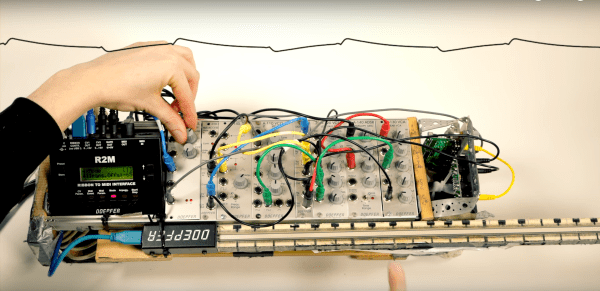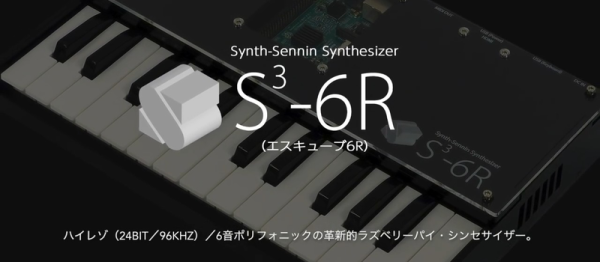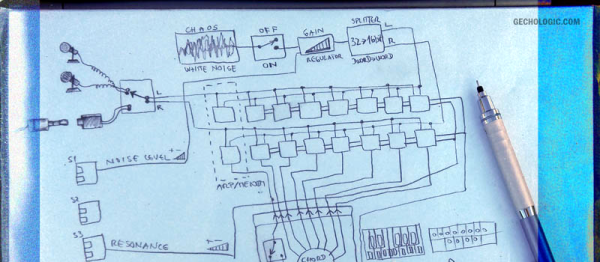It sounds a little like a Theremin and looks a lot like the contents of your scrap bin. But it’s a unique musical instrument called a modulin, and after a few teasers we finally have some details on how it was built.
Making music with marbles is how we first heard of [Martin] of the Swedish music group Wintergatan. He seems as passionate about making his own instruments as he is about the music itself, and we like that. The last time we saw one of his builds was this concert-ready music box, which he accompanied with an instrument he called a modulin. That video gave only a tantalizing look at this hacked together instrument, but the video below details it.
“Modulin” comes from the modular synthesizer units that create the waveforms and pressure-sensitive ribbon controller on the violin-like neck. The instrument has 10 Doepfer synthesizer modules mounted to a hacked-together frame of wood and connected by a forest of patch cables. [Martin]’s tour of the instrument is a good primer on how synthesizers synthesize – VCOs, VCAs, envelope generators, filters – it’s all there. We’re treated to a sample of the sounds a synthesizer can make, plus majestic and appropriately sci-fi sounding versions of Also sprach Zarathustra and the theme from Jurassic Park. And be sure to check out the other video for another possibly familiar tune.
This might be old hat to musicians, but for those of us to whom music is a mystery, such builds hold extra sway. Not only is [Martin] making music, he’s making the means to make music. We’re looking forward to hearing what’s next.
Continue reading “It’s A Synthesizer. It’s A Violin. It’s A Modulin”

















